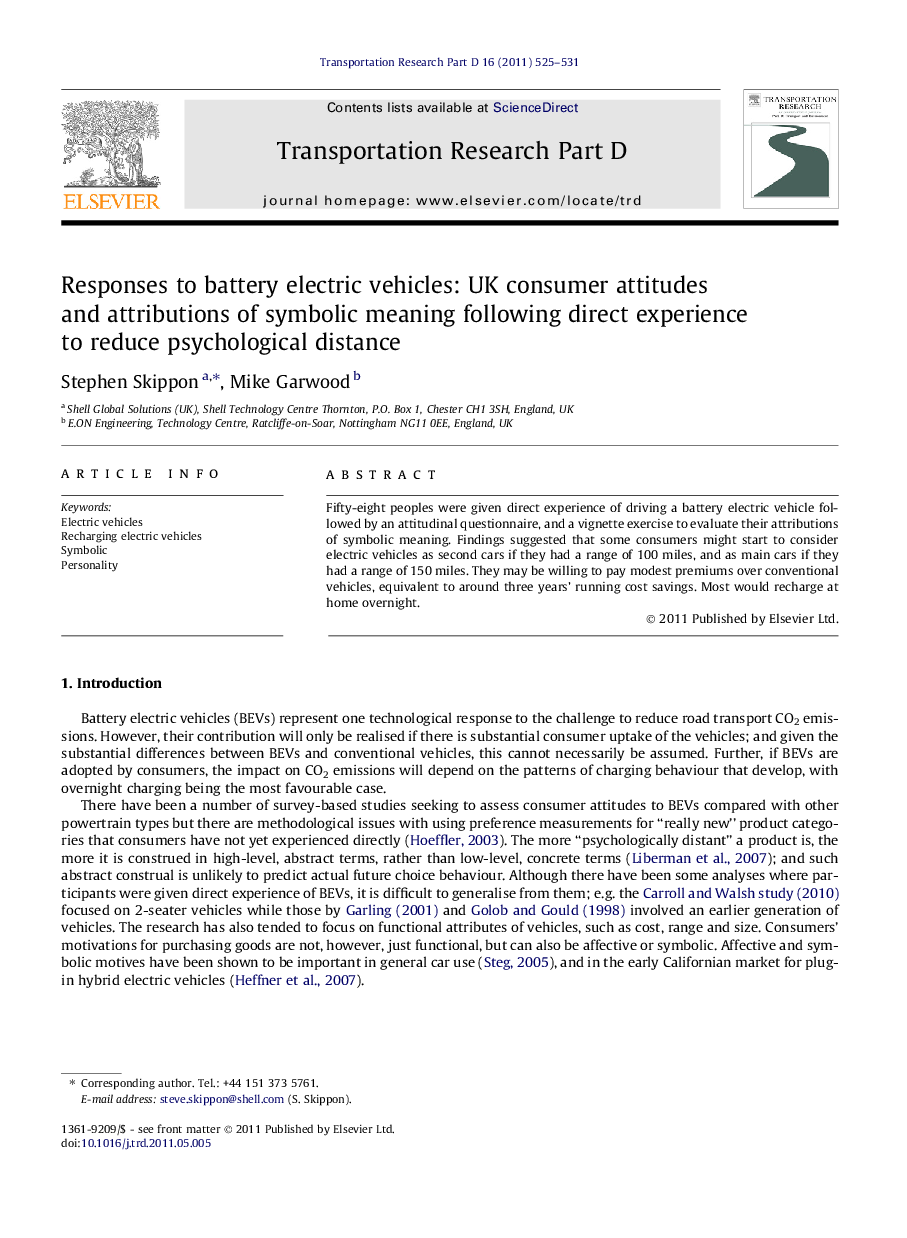| Article ID | Journal | Published Year | Pages | File Type |
|---|---|---|---|---|
| 1066009 | Transportation Research Part D: Transport and Environment | 2011 | 7 Pages |
Fifty-eight peoples were given direct experience of driving a battery electric vehicle followed by an attitudinal questionnaire, and a vignette exercise to evaluate their attributions of symbolic meaning. Findings suggested that some consumers might start to consider electric vehicles as second cars if they had a range of 100 miles, and as main cars if they had a range of 150 miles. They may be willing to pay modest premiums over conventional vehicles, equivalent to around three years’ running cost savings. Most would recharge at home overnight.
► Mainstream consumer drivers were given the opportunity to drive a battery electric vehicle (BEV). ► Consumers may consider BEVs with a range of 100 miles as second cars, and BEVs with a range of 150 miles as main cars. ► Public charging infrastructure may give reassurance to consumers, but most will recharge at home overnight. ► Early adopters may have high conscientiousness, low involvement with cars, and high personal concern for the environment.
